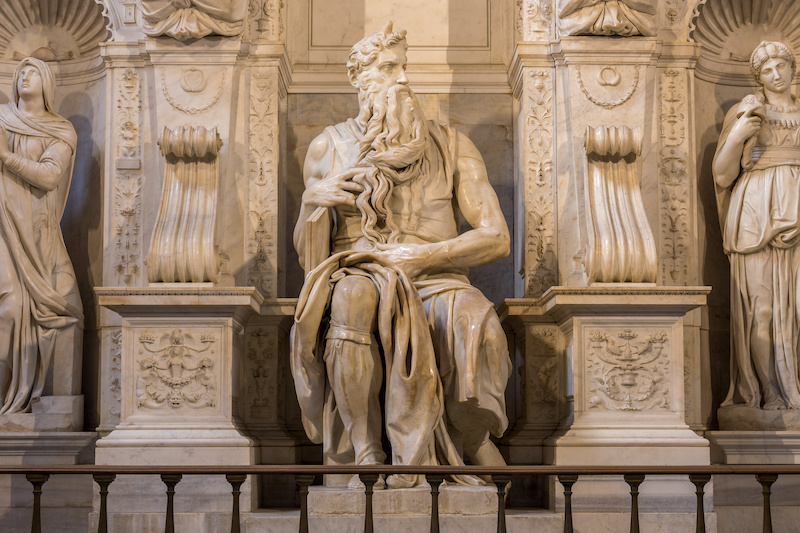Visiting all the wonders of the Eternal City is a – almost – impossible mission for any tourist staying in the capital for a few days. Exploring all the attractions and monuments of Rome in a weekend or slightly longer represents a real challenge.
If it’s not possible to admire all the beauties of Rome in a short amount of time, it’s still possible to combine multiple points of interest within a single day, as many are located just a few hundred meters apart from each other.
A shining example of this is the area around the Imperial Fora, in the shadow of the Colosseum: in a relatively small area lie some of the most fascinating monuments of the Italian capital.
Origins and Legends: Unveiling the Story Behind San Pietro in Vincoli
Continuing along via Cavour, on the right side from via dei Fori Imperiali, after concluding the tour of the Palatine Hill and the Roman Forum, one comes across the staircase of Via San Francesco di Paola, at the end of which lies Piazza di San Pietro in Vincoli and the homonymous basilica. Its name is due to the chains (vincula in Latin) preserved inside the Church, which tradition claims were those used to bind St. Peter during his imprisonment first in Jerusalem and then in the Mamertine Prison.
It was the Empress Elia Eudocia, wife of the Eastern Roman Emperor Theodosius II, in the 5th century AD, who received the chains that had held Peter imprisoned in Jerusalem from the Patriarch of Jerusalem, Giovenale; the empress then donated them to her daughter Licinia Eudossia, wife of the Western Roman Emperor Valentinian III, who personally gave them to Pope Leo I, who already possessed the chains used during Peter’s imprisonment in the Mamertine Prison. Legend has it that when the pontiff brought the two chains together, they merged indissolubly.
For this reason, the Basilica of San Pietro in Vincoli was built, to celebrate this miracle and to preserve the chains here, under the main altar and visible every August 1st.
Another treasure kept inside
After centuries of tranquility in which the church maintained its original appearance, Julius II commissioned restorations at the beginning of the 16th century, which involved the facade and the portico and gave the church its current appearance.
Today, the Basilica is known and visited by tourists from all over the world because since 1545 it houses one of the masterpieces of the Renaissance, Michelangelo’s Moses, sculpted by the great artist in 1513 to adorn Julius II’s funeral monument. The original plan was not respected at all because the Pope’s energies were entirely dedicated to the construction of St. Peter’s Basilica. For this reason, the construction of the mausoleum in San Pietro in Vincoli was suspended, not without great disappointment on Michelangelo’s part. The sculpture was therefore completed only after the Pope’s death, who was buried in St. Peter’s Basilica in the Vatican: the tomb of San Pietro in Vincoli is therefore empty.
The work portrays Moses seated with the Tablets of the Law just received from the Lord. The moment represented by Michelangelo follows the delivery of the Commandments on Mount Sinai. Upon his return, Moses finds the Israelites worshiping a golden calf, a pagan idol. Michelangelo’s Moses is therefore depicted angrily at this attitude, with sculpted veins that seem to pulsate, tense muscles, and a solemn and furious face.
In addition to Moses, inside the basilica, you can admire works by Guercino, Domenichino, and Pomarancio.
The interior, with three naves, features a lowered wooden vault in the central one, designed in 1705 by Francesco Fontana, with at its center the depiction of the Miracle of the Chains painted by the Genoese artist Giovanni Battista Parodi.
Conclusion
The Basilica of San Pietro in Vincoli is thus a true treasure of Rome, a jewel to be admired with beautiful Renaissance frescoes and an ancient legend rooted in history and religion.


